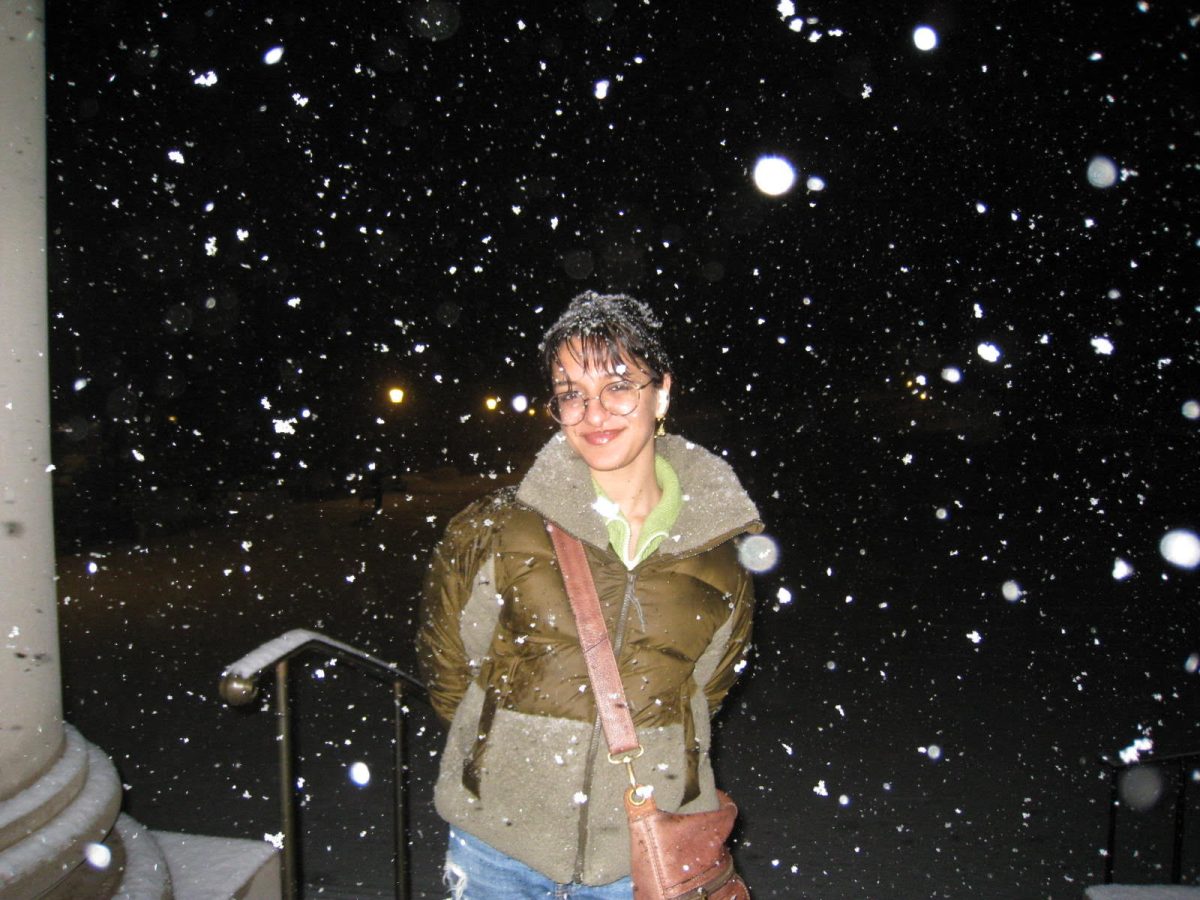
In November 1980, a notable act of violence was committed at the College to impede on Black students’ sense of safety: A cross was burned in front of Perry House.
Anti-Blackness and systemic racism enshroud the history of both the College and Williamstown. In recent decades, the College has made several attempts to remedy the racism that pervades this community, such as the establishment of the Davis Center and the Office of Institutional Diversity, Equity, and Inclusion, as well as the several committees that address racism, including the most recent addition, the Ad Hoc Anti-Racism Campus Task Force. Nevertheless, racism persists at the College — perhaps most overtly through bias incidents on campus, including the confederate graffiti found on the Soldiers Monument in fall 2022.
Knowing this, one must ask whether the College will ever be a safe place for Black students. This is an almost impossible question to answer, but it is important to look at the past to see why the College has historically failed to protect Black students.
In the Nov. 4, 1980 issue of the Record, it was reported that on Nov. 1, 1989, at about 10:20 p.m., two figures dressed in white sheets lit a cross in front of Perry. The burning coincided with a Black Student Union (BSU) homecoming party in the adjacent Weston House. The perpetrators fled in a waiting car, which drove onto Route 2 and then headed toward North Adams. The College conducted an investigation to find the perpetrators, however, they were unable to find them.
The next day, then-Dean of the College Cris Roosenraad and President John Chandler held a meeting with a majority of the College’s approximately 120 Black students — a meeting that was called due to pressure from the Record and then-College Council President Darrell McWhorter ’81. The meeting was an attempt to reduce student fears of the growing nationwide violence toward Black students, yet students left unsatisfied.

“The meeting was supposed to allay student fears; I’m not sure it accomplished that,” Greg Witcher ’81 said in a Nov. 4, 1980, Record article.
“Why weren’t we told sooner?” asked another Black student in the article. “The College knew by 10:30 p.m. that a cross was burned near the BSU and yet they told no one at the party. There were Black women going to and leaving the party alone all night. It shows grave irresponsibility on the part of the College.”
The following Monday, about 1,200 of the 1,950 students at the College attended a rally to protest the cross burning. Eight hundred students, faculty, and staff then marched to Perry House.
“The rally was the right thing to do,” McWhorter said in the Nov. 4, 1980 Record article. “Although the administration initially acted very badly, I think we can now have faith in them, after the rally. They acted quickly and thoughtfully. I just can’t believe there were so many people here who were crying, so many people who were moved.”
But the intimidation wasn’t over. The following Wednesday, there were a series of racial incidents that targeted Black students. Several students received anonymous threatening phone calls, one student received a rape threat, another received a letter signed by the “KKK,” and the BSU library in Mears House was broken into and ransacked. Classes were canceled on Nov. 11 and about two-thirds of the student body attended a meeting to discuss the violence.
In what seemed to be a moment of solidarity among all students against racism, the state of race relations at the College seemed to be on track to improve. “I believe we will emerge from this stronger, more sensitive, more informed as a college, more responsive to the needs of minority students,” then-President John W. Chandler said of the meeting.
The recorded history of the cross burning and the events following can only cover so much. Lived experiences, however, can fill in the gaps the archives leave empty.
John Coleman ’81, a Black alum who experienced the cross burning, agreed to be interviewed by the Record to continue telling this unfinished story.

Coleman, McWhorter, and other students contacted alums such as Preston Washington ’70 and Gordon Davis ’63, who asked the College to take action. “I think reaching out to them caused enough of a stir to then have the day off to have the general discussions about race and what happened,” Coleman said.
“Our fellow students were supportive for a period of time, but probably by Winter Study, that eased off,” Coleman said.
Despite dwindling support for Black students, the cross burning had lasting effects on an institutional level. “Our efforts to have what turned out to be the Black Alumni Network started with the cross burning and our efforts to contact people like Preston Washington,” Coleman said. The Williams Black Alumni Network was officially founded in 1982.
There are other examples of racist incidents giving birth to new opportunities to improve the Black student experience at the College such as Claiming Williams Day. But is it fair for Black students’ trauma to be the vehicle of change? It is true that these racist incidents have brought unexpected positive changes, and it is also equally true that these changes have occasionally obscured their preceding racist incidents — forgetting racism does not solve it. Through un-forgetting and acknowledging the College’s racist history, we can find answers to how to pre-emptively protect Black students.








